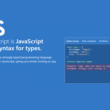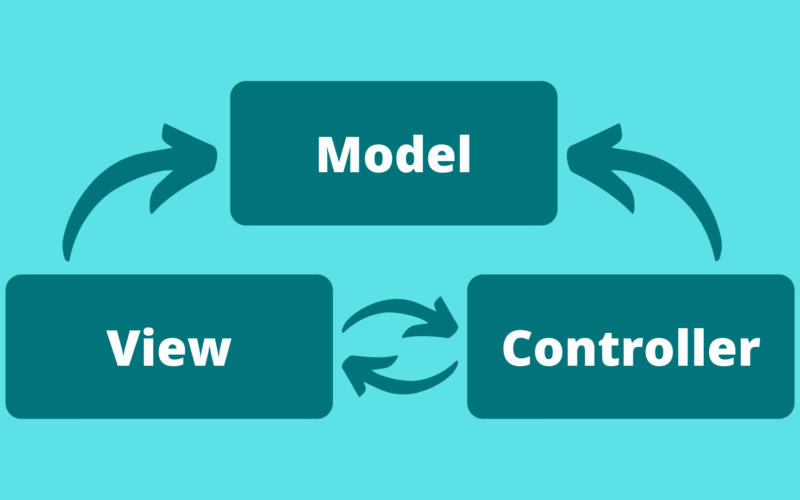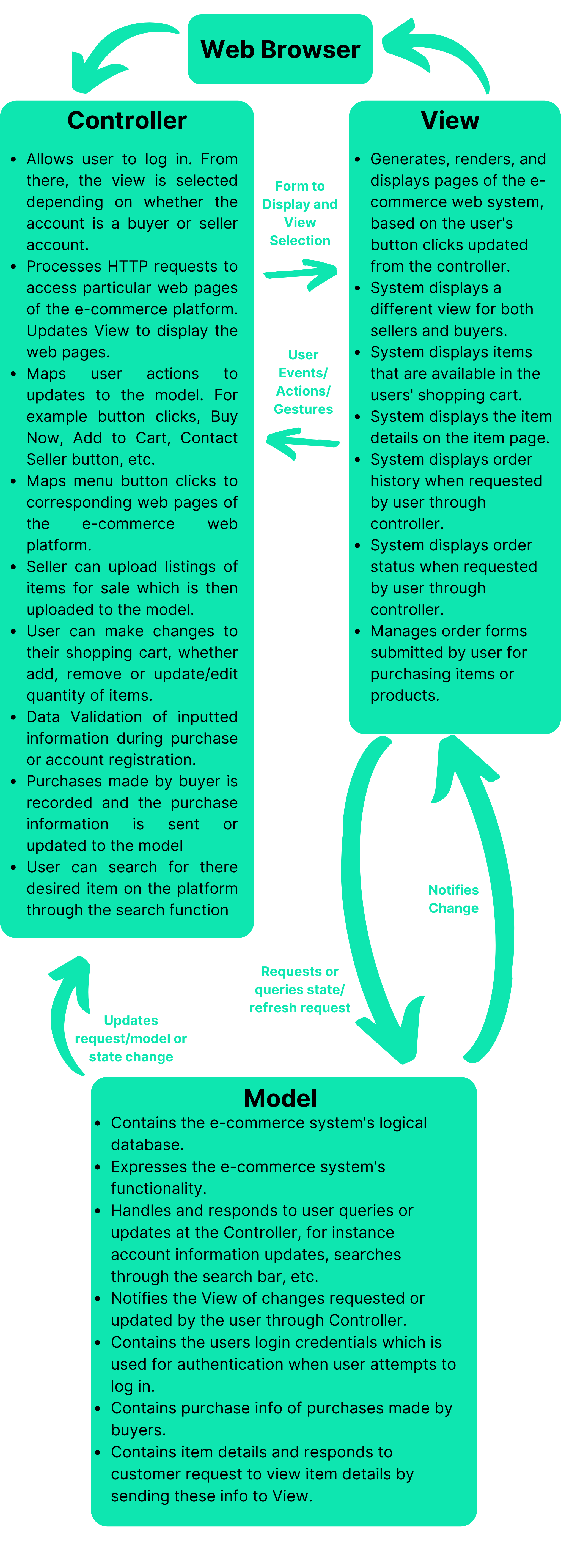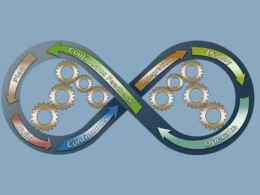In software engineering and development, the Model View Controller (MVC) architecture or pattern is a common design framework that’s used for developing various World Wide Web systems and applications.
Therefore, this guide explains in detail, what exactly is the model view controller pattern, its advantages, disadvantages and an example of its architecture for an e-commerce platform.
Without further ado, let’s get right into it!
Table of Contents
What is a Model View Controller Architecture?
The Model View Controller (MVC) is an architectural pattern that divides the application or system into 3 interconnected primary logical elements/components, namely the model, view and controller. Thus, splitting the system’s business logic from its presentation layer. So, each of these modules serves a specific purpose in the entire system’s development.
That being said, MVC is a generic and abstract pattern that can be adapted to specific applications and systems. Having said that, it’s one of the most favoured industry standards when it comes to frameworks for web-based systems in any major programming language, as it can be strategically used for creating scalable products.
The following is a more in-depth explanation of the 3 components of the MVC pattern:
Model
Consists of the business logic and database that contains important data essential to the system and view. This mainly entails how the system or its data is presented or displayed to the end-user. So, it can contain the data that’s being transferred between the View and Controller modules or other business logic-related data. It’s considered the central component of the pattern, as displayed in the diagram. Plus, it typically possesses a dynamic data structure that’s independent of the user interface and it has the ability to directly operate the data, logic and rules of the system.
Controller
Describes the actions that can be performed by the user through the system, and how the system responds based on the MVC architecture. The controller will send the command to the model to be executed based on inputs. It’s considered the brains of the operations within a system as it processes all the business logic and incoming requests, alters Model data and communicates with the View to change the results’ display.
View
Displays the result or outcome of the command sent by the controller to the model. Besides that, this component represents all the UI logic of the system. It essentially provides a clear representation of information in a certain format.
Advantages of a Model View Controller Architecture
Firstly, the MVC pattern helps to separate the frontend user interface (UI) and the backend code or business logic of the system into separate constituents. Overall, this makes the system easier to manage, modify, and update with changes without interfering with the other component. This also ensures that the components are reusable and independently deployed, tested, or maintained. So, it provides good support for a test-driven development process.
Owing to its independent structure, this allows for concurrent or simultaneous development to take place. This is because multiple developers can be tasked to work on the model, view or controller components at the same time. Additionally, remaining independent can reduce the number of unnecessary dependencies, while maintaining extendability and scalability.
Additionally, this architecture promotes cohesion between logically-related actions. For instance-related actions can be handled together by the controller and a model can have multiple views grouped together.
Moreover, the MVC pattern allows developers to leverage existing features that are available with ASP.NET, JSP, Django, etc. Simultaneously it provides better when using HTML and URLs as it provides easier URL routing for SEO-friendly URLs. Thus, this extensive URL-mapping feature provides comprehensive and searchable URLs.
Disadvantages of a Model View Controller Architecture
As appealing as its benefits might seem, the MVC also possesses minor noteworthy downsides. Firstly, owing to its complex nature, it may be challenging to read, alter, or reuse an existing model. Plus, as more layers of abstraction are introduced in the system, this can further make the framework navigate more complex. Thus, it may not be a suitable architectural pattern option for smaller scope applications. Plus, an MVC pattern requires multiple developers for simultaneous programming and knowledge of more technologies.
Example of a Model-View-Controller Architecture Diagram for an E-Commerce Platform
An e-commerce web platform can utilise a model-view-controller (MVC) architecture, especially since it can require different views for different users.
In this case, there should be a separate view for buyers and sellers, since buyers will be more interested in seeing the item details, being able to make purchases, search for items for sale and other buyer activities. Meanwhile, sellers can have a view of their profile, the products they’re selling and its performance in terms of sales and customer support handling.
The following figure shows the architecture of an e-commerce web-based application system organized using the MVC pattern:
Conclusion
To recap, an MVC architectural pattern divides into 3 basic constituents, as indicated in its name, the model, view and controller. Due to its scalability and maintainability, it’s a favoured choice for development teams, primarily when creating web-based systems.
That being said, this article explored the model view controller pattern, the functions of each of its components, its advantages, disadvantages and, as an example, how it can be designed for the architecture of an e-commerce platform.
With that said, we hope you’ve found this guide helpful in bolstering your understanding of the model view controller pattern and architecture. Do comment down below if you have any questions or additional information regarding this topic.
Feel free to share this post with your fellow coders and software engineers!













